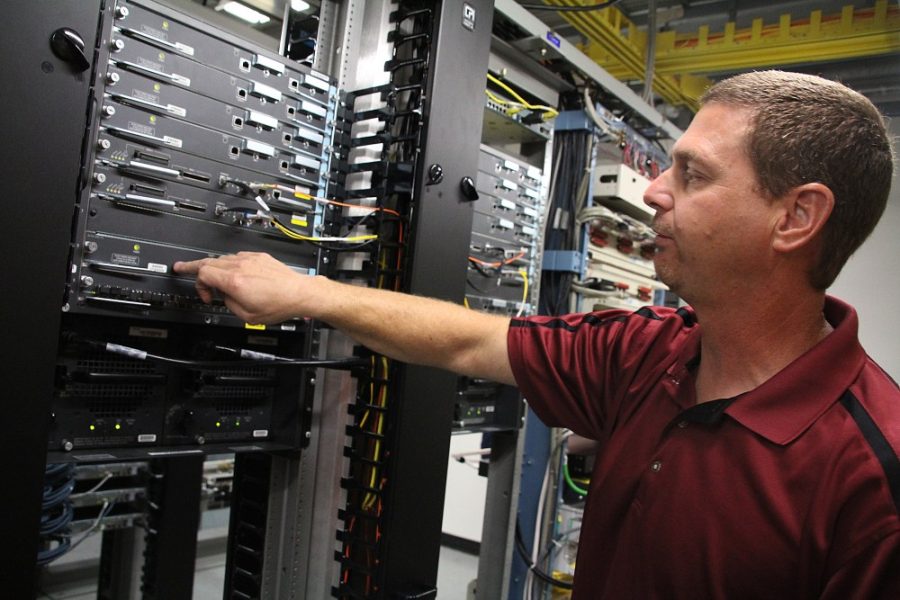In about two years, the UA could have 100 percent UA WiFi coverage.
Topping the Pac-12 with more than 6,500 wireless access points throughout campus, UA WiFi covers roughly 82 percent of the university, according to Kenn Boynton, senior communications systems analyst for University Information Technology Services. He said the goal is to reach 100 percent, but that doesn’t mean every building is covered.
The space has to be student-focused and not scheduled for demolition anytime soon for UITS to completely fund its UA WiFi coverage. UITS is working on installing UA WiFi indoors in the Department of Veterinary Science and Microbiology, Sonett Space Sciences building and the second floor of the Louise F. Marshall building, Boynton said. The outdoor area from the Old Main Fountain to Park Avenue and University Boulevard will have coverage in about two weeks, Boynton said. The area from Campbell Avenue to Old Main is already covered outdoors.
UA WiFi was introduced in 2006 at a startup cost of $4 million because students wanted Internet mobility. Today, the network takes between $1.5 and $2 million a year to maintain, said Derek Masseth, senior director for client and infrastructure services. And because student Information Technology/Library Fee dollars primarily fund UA WiFi, the student unions and libraries received it first, he added.
Jennifer Hedger, a psychology junior, said network coverage is very weak and unreliable in the Manuel T. Pacheco Integrated Learning Center of the UA Main Library, but good everywhere else.
Brian Noble, a Near Eastern studies senior, said he uses UA WiFi almost everyday on his iPhone and the service is always good. He said he doesn’t mind paying the fee to support the service.
“It’s essential,” Noble said. “You should be able to access the Internet anywhere on campus.”
Arthur Jordan, a sophomore studying aerospace and mechanical engineering, said he would be more willing to pay the student fee money if the coverage was stronger and wider.
“It all depends on where you are on campus,” he said. “You almost have to search for the hotspots.”
Information Technology/Library Fee revenue for fiscal year 2011 was $5,178,800, according to the IT Student Advisory Board’s website. Along with the wireless service, the money funds the OSCR Student Computing Laboratories and the 24/7 IT Support Center. Student dollars do not fund UA WiFi for exclusively administrative buildings, Masseth said.
“We don’t use your dollars to fund anything that doesn’t serve students,” Masseth added.
The 24/7 IT Support Center receives 20 to 25 complaints a week about UA WiFi, Masseth said. The most common issues are password-related or because a student’s computer is using software that needs to be updated. Most issues are quickly resolved, he added.
After it hits 100 percent coverage, UITS will continue to upgrade the access points and other equipment.
In 2006, UA WiFi’s simultaneous users numbered in the hundreds. Last week, there were 21,088, a record and almost twice as much as last year’s high. UA WiFi is up 99.999 percent of the time, Masseth said.
“Looking at those numbers compared to the amount of complaints, I’d say is a sign of success. Every once in a while we have power related glitches and when the power goes out, for some reason people think the wireless should stay,” Boynton joked. “The system is very stable.”









